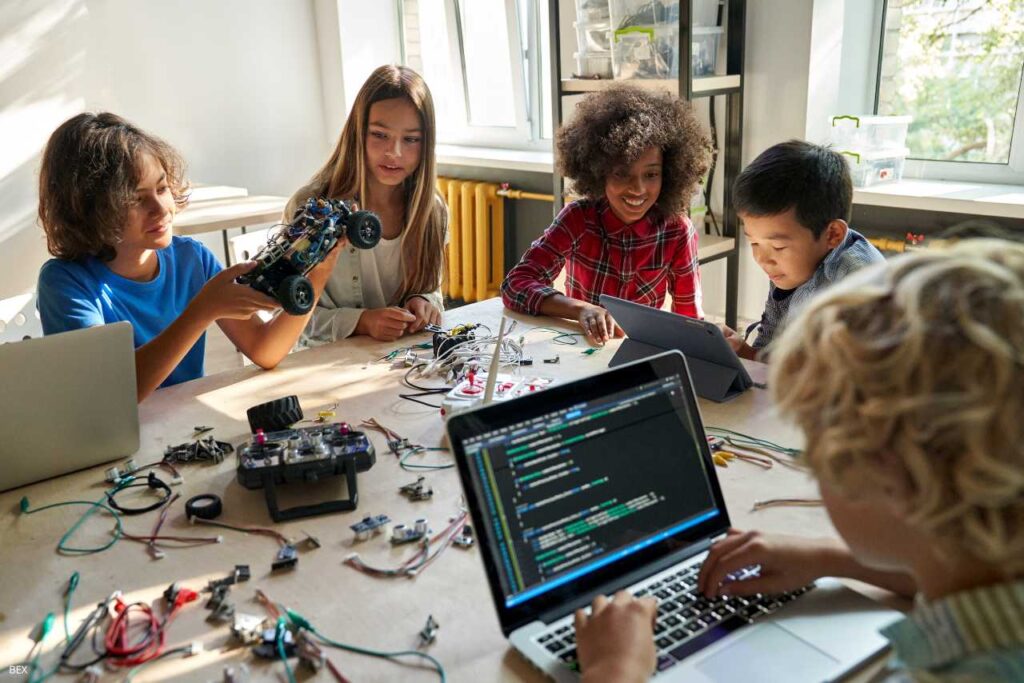The integration of artificial intelligence into the fabric of early childhood education is no longer a futuristic concept but a burgeoning reality. With the global AI in education market projected to reach tens of billions of dollars in the coming years, the presence of AI-powered tools in preschools and kindergartens is set to expand. This technological wave brings with it the promise of personalized learning and enhanced engagement, yet it also presents a complex web of challenges that educators, parents, and policymakers must navigate with caution and foresight. From data privacy concerns to the specter of algorithmic bias and the crucial need for teacher preparedness, the path to responsibly harnessing AI for the youngest learners is fraught with critical considerations.
One of the most pressing challenges lies in the realm of data privacy and security. AI educational tools, by their very nature, collect vast amounts of data on children’s learning patterns, behaviors, and even their emotional responses. This sensitive information is invaluable for personalizing learning experiences, but it also creates a significant risk of misuse and privacy breaches. A staggering 93% of parents with school-aged children have expressed concerns about the use of AI in the classroom, with 46% specifically worried about their children sharing personal data online. The vulnerability of young children, who cannot provide informed consent, places a heavy burden of responsibility on educational institutions and technology developers to ensure robust data protection measures are in place.
Closely intertwined with data privacy is the issue of algorithmic bias. AI systems are only as unbiased as the data they are trained on. If the data reflects existing societal biases, the AI can perpetuate and even amplify them. In the context of early childhood education, this could manifest in educational games and apps that reinforce gender stereotypes. For example, searches for «games for girls» on app stores often yield results focused on domestic activities, while «games for boys» are more likely to feature puzzles and science-related challenges. Such biases can subtly influence a child’s interests and self-perception from a very young age, potentially limiting their future aspirations.
Another significant hurdle is the preparedness of educators. While many teachers are open to the idea of using AI in the classroom, a substantial gap in training and resources remains. A recent survey revealed that the vast majority of teachers have not received any professional development on using AI. Without proper training, educators may struggle to effectively integrate AI tools into their pedagogy or critically evaluate their appropriateness and potential biases. This lack of preparedness is a significant barrier to realizing the potential benefits of AI in early education. Teacher preparation programs are only now beginning to incorporate AI into their curricula, indicating a lag between the technology’s advancement and the readiness of the workforce.
The cost of implementation and the digital divide also pose significant challenges. High-quality AI educational tools can be expensive, creating a risk of inequity between well-funded and under-resourced schools and families. This «digital divide» could mean that children from disadvantaged backgrounds are less likely to have access to the potential benefits of AI-enhanced learning, further widening existing educational disparities. The conversation around AI in education must therefore include a focus on ensuring equitable access for all children.
Finally, there is the critical concern of over-reliance on technology and the impact on social-emotional development. Early childhood is a crucial period for developing social skills through face-to-face interaction, physical play, and hands-on experiences. An excessive focus on AI-driven learning could reduce opportunities for these essential human connections. While some studies suggest that AI-powered robots can help children with emotional recognition and social cues, experts caution that technology should complement, not replace, the nurturing guidance of teachers and caregivers. The development of empathy and nuanced social understanding is a deeply human process that technology can support but not fully replicate.
In conclusion, while artificial intelligence holds the potential to revolutionize early childhood education, its integration is a path that must be trodden with care. Addressing the challenges of data privacy, algorithmic bias, teacher training, equity, and the potential impact on social-emotional development is paramount. As we stand at the precipice of this new educational frontier, a balanced and ethically grounded approach will be essential to ensure that AI serves as a powerful tool for learning and growth, without compromising the well-being and holistic development of our youngest and most vulnerable learners.





